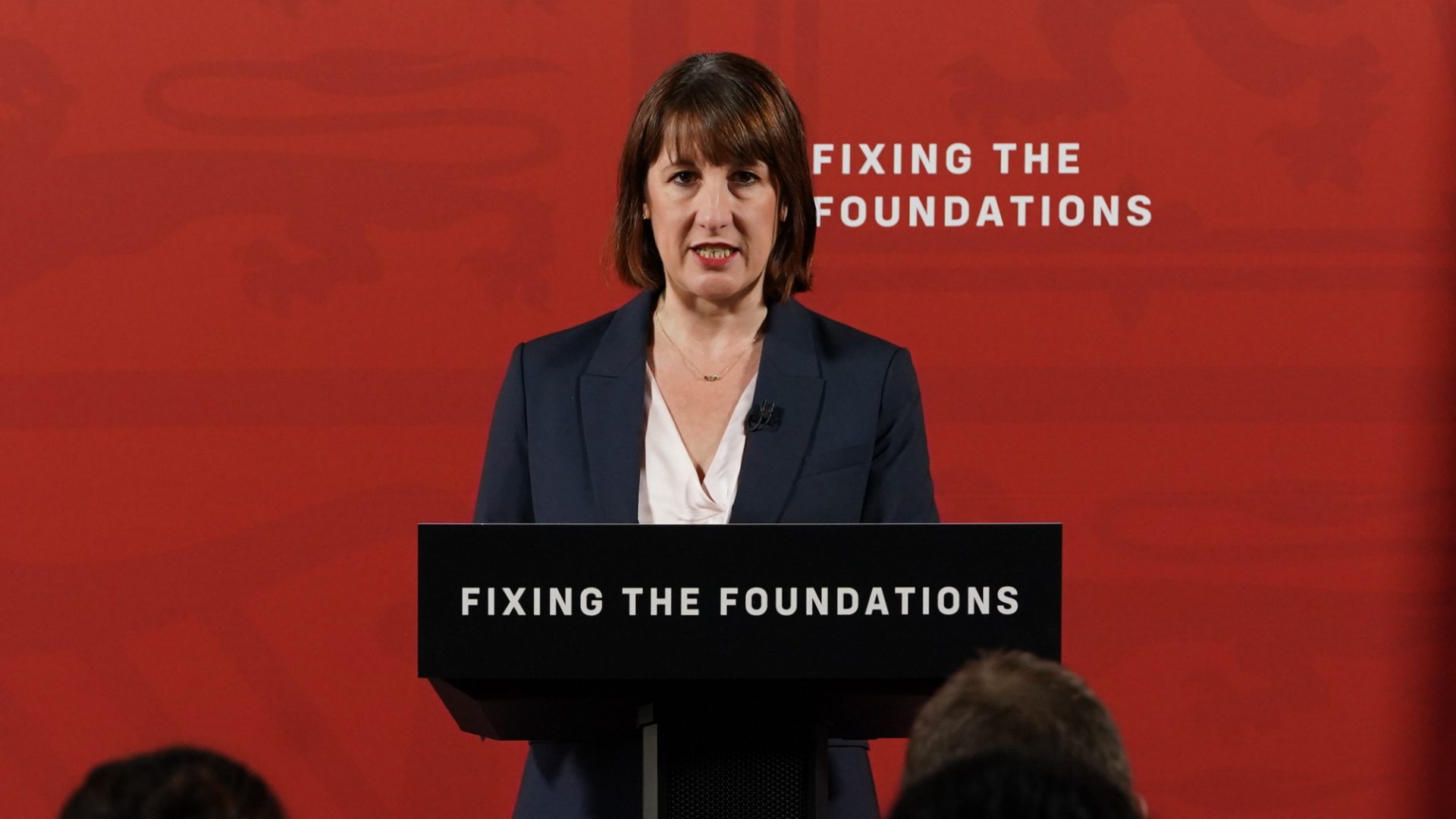Chancellor Rachel Reeves is said to be mulling tax rises and spending cuts in her October budget. Though the economy is growing, potentially leaving room for increased public spending in the medium term, the £22bn in-year overspend left to her by the Tory government has tied her hands, and her own fiscal rules are so tough that they may demand a temporary return to austerity. So goes the speculation in the newspapers.
The reality is, Reeves has better options, both were telegraphed in a single paragraph from her Mais lecture, delivered on March 19. She told the assembled City bigwigs that, in addition to her fiscal rules:
“I will also ask the OBR to report on the long-term impact of capital spending decisions. And as chancellor I will report on wider measures of public sector assets and liabilities at fiscal events, showing how the health of the public balance sheet is bolstered by good investment decisions.”
Here’s what that means, decoded. First, the Office for Budget Responsibility, during its 14-year existence under the Tories, developed the view that there can be no long-term positive impact from public spending increases. Its model of the so-called “fiscal multipliers” – how much economic bang do we get for every buck of taxpayers’ money spent – is highly conservative.
It says that an extra pound spent on, for example, infrastructure, boosts the economy by a maximum of £1 in year one, falling to zero in year five. And for money spent on, for example, the junior doctors’ pay increase, it starts out at 45p in year one and again falls to zero in year five.
Though the OBR admits it is possible for a sustained programme of public investment to raise the long-term output potential of the UK, since no government has tried to do so, it is not obliged to model it.
So by “asking” the OBR to model the long-term growth impacts of her investment strategy, Reeves has the potential to change the outcome of her fiscal rules massively. If the OBR can be persuaded that a mixture of investment and deregulation will boost the output of, for example, the clean energy and housing industries, it will allow Reeves to borrow more against the expected rise in GDP.
The second hint Reeves gave was about how the Treasury calculates public assets against liabilities. The current rules are ludicrous. Based on international comparisons, it is likely that the stuff the government owns – from army tanks to land to the road network – is worth around 100% of GDP. Yet when the government spends money on such assets, the Treasury’s accounting rules treat that money as if it were poured down the drain.
It’s the opposite of the way businesses account for spending, and – as with the OBR approach to the multiplier effects – leaves the government with no economic rationale for investment.
If Reeves wants to make good the hints dropped in the Mais Lecture, she should tell the OBR to come up with a model – or range of models – showing how investment can boost growth, and give an assessment as to the value of the assets created when the government invests.
And as hawk-eyed readers of the financial press know, there is more she can do without resorting to spending cuts. Reeves’s fiscal rules state that everyday spending has to balance with the tax take, while capital expenditure can be funded by borrowing, so long as it produces enough growth to get debt falling as a percentage of GDP in five years’ time.
But around £20bn a year’s worth of Treasury debt is being generated by a process called “quantitative tightening” – whereby the Bank of England is selling off the assets it bought to stave off economic collapse after 2008. If, say analysts at Barclays, the government were to shift ownership of those losses from itself to the Bank of England, and allow the Bank to retain the profits of its own financial investments – as happens in other countries – that would be £20bn that Reeves could use.
And remember, there is a lack of clarity around the rules Reeves has announced. Debt has to be falling by year five of the forecast, but she has given no time horizon for when taxation and day-to-day spending have to fall into line. The Institute for Fiscal Studies calculates that, were she to fix this target over five years, instead of the three adopted by Rish Sunak and Jeremy Hunt, it would give her a whopping £48bn to play with.
Nevertheless, I expect Reeves will make some demonstrative hard choices in the coming budget. She is faced with a hugely expanded Parliamentary Labour Party, with members from regions Labour has never represented before, all clamouring for increased public investment. There is a welfare lobby, which wants the two-child benefit cap removed and Reeves’s cuts to the winter fuel payments reversed; and there is a defence lobby, which believes not only that Labour must deliver the 2.5% of GDP it promised in short order, but that much more will be needed to fund rearmament in the face of Russian aggression.
So we may, indeed, see tax rises. Reeves’s mantra during the election was that there would be no tax rises on “working people”. But that leaves capital gains, corporation tax and inheritance tax to play with – both at the level of rates and exemptions.
Reeves’s strategic problem remains. Labour has chosen to kick-start economic growth through state direction and regulation changes, rather than a straight spending boost. To the extent that growth takes effect too slowly, she needs a way of convincing the OBR and the financial markets to cut her some slack.
A few draconian decisions on spending, provoking a backbench revolt; combined with a tax raid on the upper-middle class and the super-rich, provoking backbench cheers; combined with a complex rewrite of the fiscal and monetary architecture, provoking incomprehension as the new debt projections are pulled out of a hat, would be my prediction.
What matters, in the end, is the growth she’s trying to achieve. Every word she’s ever written on the subject (including an entire book) suggests that Reeves believes that better jobs and rising wages will do more to alleviate poverty than relaxing the Tory welfare rules.




